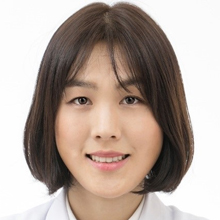Clear Aligners for Surgical Treatment of Class III malocclusions
Clear aligners for surgical treatment of Class III malocclusions
Dental decompensation is critical for surgical orthodontic treatment.
Skeletal Class III patients often have labially inclined upper incisors and lingually inclined lower incisors to compensate for the sagittal skeletal discrepancy.
In addition, maxillary second molars are extruded as they often do not have occluding teeth in the mandible.
For those who have maxillary transverse deficiency, transverse compensation is observed showing buccal tipping of the upper molars and lingual tipping of the lower molars. Also, a difference in the molar and premolar inclination is shown among those who have facial asymmetry.
I will present treatment strategies for anteroposterior, transverse and vertical decompensation of skeletal Class III patients who were treated with surgery-first approach using virtual surgical planning and clear aligners. Biomechanical considerations for effective control of incisor and molar inclination using clear aligners and temporary skeletal anchorage devices will be discussed.
Yoon-Ji Kim, DDS, MSD, PhD, Assistant professor, Department of Orthodontics, Asan Medical Center, University of Ulsan School of Medicine, Seoul, Korea.
Dr Yoon Ji Kim is Assistant Professor of Orthodontics, Ulsan University.
Biography
Dr. Yoon-Ji Kim is currently an assistant professor at the University of Ulsan College of Medicine and Asan Medical Center Seoul, Korea. She graduated from Dankook University, Cheonan, Korea in 2007 and received the orthodontic specialist board in 2011. She is the board member of the Korean Association of Orthodontists, Korean Society of Digital Orthodontists, Korean Orthognathic Society, and Korean Association of Lingual Orthodontists.
She is an active member of the World Society of Lingual Orthodontics. Her research interests are three-dimensional imaging, digital orthodontic using intraoral scan data, and machine learning methods for diagnosis of malocclusions and temporomandibular joint disorders.

